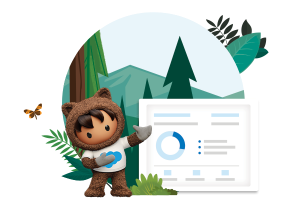Establishing a data culture is essential for organisations to get the most from their data. Data insights enable better business decisions, more personalised customer communications, and greater automation.
To succeed in the digital age, organisations need to unlock the value of their data. In this blog, we suggest five steps towards creating an efficient data culture.
What is a data culture and why do I need one?
Data culture is the shared beliefs and behaviours of individuals who advocate, prioritise, and utilise data to enhance decision-making.
Data supports optimised decision-making, from board-level strategy to the operational decisions that sales, service, and marketing teams make daily. With rich data insights, employees and the business can win more customers, improve efficiency, and boost competitive advantage.
But how do you ensure your organisation is utilising data in the right way? To make the most of this critical asset, you need to look beyond your team of data scientists and embed a data-driven mindset across the entire organisation.
“It’s not just about making data implicit in every process, but developing a new mindset where data doesn’t necessarily replace intuition but augments it,” explains Pease.
Most would agree that establishing a data culture is vital to thriving in a digital world. However, systematically inserting data into every decision point can be challenging and requires careful change management.
To make it simpler, we’ve broken down the journey towards a data culture into five key steps:
1. Secure board-level recognition of why a data culture matters
Board-level investment and leadership are a must. Many organisations have appointed a Chief Data Officer or equivalent, but widespread support among the board is vital so members can set an example and even identify opportunities within their area where data can enrich decision-making.
“It’s worth establishing data mission statements and measurements from the start, so everyone can understand what you’re aiming to achieve and how you’re going to get there,” says Pease.
2. Involve users from the start of every data-driven initiative
Transparency is really important in a data culture. Employees need to understand where data has come from and how algorithms work to trust them, especially if the output conflicts with their gut feeling.
For any large-scale initiative, it is a change management best practice to involve a small group of potential users from the very start. This team can verify your data and algorithms, identify any potential anomalies early on, and become your superusers.
“Superusers will then be your data evangelists – spreading enthusiasm and training others so they can also understand the advantages,” comments Pease
3. Prioritise data security and compliance to ensure trust in your data culture
To garner customer trust and comply with regulations, including GDPR, it’s vital to ensure that data is fit for purpose and only available to those that need it, when they need it. We’re all aware of the potential impact of a security breach on brand reputation, customer loyalty, and profitability, so every data-driven solution and process needs security built-in.
Organisations – and employees – need to recognise that customers have different appetites for data intimacy. They must respect a customer’s wishes if they prefer not to share personal information. Capturing these preferences is the first and foremost part of gathering customer data. And at every stage of customer engagement, these preferences must be adhered to.
“Another key consideration is that customers have a right to understand how data is collected and used,” adds Pease. “But this can be a tricky balance as it needs to be achieved without compromising security or sharing intellectual property that’s part of an organisation’s competitive advantage.”
4. Make data available in a digestible form and the right tools
The democratisation of data means making it accessible to a wider audience – such as sales, service, and marketing teams – and underpins the whole idea of a data culture. But these data insights must be available in the right format, via the most appropriate tools, and at a suitable time to be of any use.
For example, if users have to switch between systems to access data or the information isn’t easily understood, they’re less likely to bother. A ‘next best action’ suggestion that pops up within a service management system just before or during a customer conversation is much more practical.
Data scientists need a different kind of access to data. “Data scientists need to be able to delve into the various systems to understand the data held by the organisation at every level, and identify opportunities for its optimisation,” comments Pease.
5. Continuously measure and refine your data-driven initiatives
Data and algorithms will never be perfect, but by creating a feedback loop you can take an agile approach to enable continuous improvement. By measuring both the use of data insights and the successes achieved, as a result, organisations can establish and share best practices.
“By publicising your successes, you can encourage more employees to use the data insights available to them and further reinforce the data culture – it’s a cyclical process,” explains Pease. “You can even use gamification techniques to motivate teams in their use of data.”
So, creating a data culture is not a one-off initiative, but an ongoing process that requires a gradual but significant change of mindset among employees. By taking an incremental approach and sharing your successes as you go, you can encourage people to use data more and reap the rewards of better decision-making.
Find out more about how Tableau Analytics can help you create and strengthen your data culture.
























